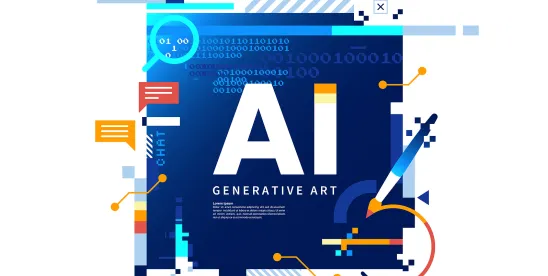Artificial intelligence (AI) is transforming the healthcare landscape, offering innovative solutions to age-old challenges. From diagnostics to enhanced patient care, AI's influence is pervasive, and seems destined to reshape how healthcare is delivered and managed. However, the rapid integration of AI technologies brings with it a complex web of legal and regulatory considerations that physicians must navigate.
It appears inevitable AI will ultimately render current modalities, perhaps even today’s “gold standard” clinical strategies, obsolete. Currently accepted treatment methodologies will change, hopefully for the benefit of patients. In lockstep, insurance companies and payors are poised to utilize AI to advance their interests. Indeed, the “cat-and-mouse” battle between physician and overseer will not only remain but will intensify as these technologies intrude further into physician-patient encounters.
- Current Trends in AI Applications in Healthcare
As AI continues to evolve, the healthcare sector is witnessing a surge in private equity investments and start-ups entering the AI space. These ventures are driving innovation across a wide range of applications, from tools that listen in on patient encounters to ensure optimal outcomes and suggest clinical plans, to sophisticated systems that gather and analyze massive datasets contained in electronic medical records. By identifying trends and detecting imperceptible signs of disease through the analysis of audio and visual depictions of patients, these AI-driven solutions are poised to revolutionize clinical care. The involvement of private equity and start-ups is accelerating the development and deployment of these technologies, pushing the boundaries of what AI can achieve in healthcare while also raising new questions about the integration of these powerful tools into existing medical practices.
Diagnostics and Predictive Analytics:
AI-powered diagnostic tools are becoming sophisticated, capable of analyzing medical images, genetic data, and electronic health records (EHRs) to identify patterns that may elude human practitioners. Machine learning algorithms, for instance, can detect early signs of cancer, heart disease, and neurological disorders with remarkable accuracy. Predictive analytics, another AI-driven trend, is helping clinicians forecast patient outcomes, enabling more personalized treatment plans.
Telemedicine and Remote Patient Monitoring:
The COVID-19 pandemic accelerated the adoption of telemedicine, and AI is playing a crucial role in enhancing these services. AI-driven chatbots and virtual assistants are set to engage with patients by answering queries and triaging symptoms. Additionally, AI is used in remote and real-time patient monitoring systems to track vital signs and alert healthcare providers to potential health issues before they escalate.
Drug Discovery and Development:
AI is revolutionizing drug discovery by speeding up the identification of potential drug candidates and predicting their success in clinical trials. Pharmaceutical companies are pouring billions of dollars in developing AI-driven tools to model complex biological processes and simulate the effects of drugs on these processes, significantly reducing the time and cost associated with bringing new medications to market.
Administrative Automation:
Beyond direct patient care, AI is streamlining administrative tasks in healthcare settings. From automating billing processes to managing EHRs and scheduling appointments, AI is reducing the burden on healthcare staff, allowing them to focus more on patient care. This trend also helps healthcare organizations reduce operational costs and improve efficiency.
AI in Mental Health:
AI applications in mental health are gaining traction, with tools like sentiment analysis, an application of natural language processing, being used to assess a patient’s mental state. These tools can analyze text or speech to detect signs of depression, anxiety, or other mental health conditions, facilitating earlier interventions.
- Legal and Regulatory Considerations
As AI technologies become more deeply embedded in healthcare, they intersect with legal and regulatory frameworks designed to protect patient safety, privacy, and rights.
Data Privacy and Security:
AI systems rely heavily on vast amounts of data, often sourced from patient records. The use of this data must comply with privacy regulations established by the Health Insurance Portability and Accountability Act (HIPAA), which mandates stringent safeguards to protect patient information. Physicians and AI developers must ensure that AI systems are designed with robust security measures to prevent data breaches, unauthorized access, and other cyber threats.
Liability and Accountability:
The use of AI in clinical decision-making raises questions about liability. If an AI system provides incorrect information or misdiagnoses a condition, determining who is responsible—the physician, the AI developer, or the institution—can be complex. As AI systems become more autonomous, the traditional notions of liability may need to evolve, potentially leading to new legal precedents and liability insurance models.
These notions beg the questions:
- Will physicians trust the “judgment” of an AI platform making a diagnosis or interpreting a test result?
- Will the utilization of AI platforms cause physicians to become too heavily reliant on these technologies, forgoing their own professional human judgment?
Surely, plaintiff malpractice attorneys will find a way to fault the physician whatever they decide.
Insurance Companies and Payors:
Another emerging concern is the likelihood that insurance companies and payors, including Medicare/Medicaid, will develop and mandate the use of their proprietary AI systems to oversee patient care, ensuring it aligns with their rules on proper and efficient care. These AI systems, designed primarily to optimize cost-effectiveness from the insurer's perspective, could potentially undermine the physician's autonomy and the quality of patient care. By prioritizing compliance with insurer guidelines over individualized patient needs, these AI tools could lead to suboptimal outcomes for patients. Moreover, insurance companies may make the use of their AI systems a prerequisite for physicians to maintain or obtain enrollment on their provider panels, further limiting physicians' ability to exercise independent clinical judgment and potentially restricting patient access to care that is truly personalized and appropriate.
Licensure and Misconduct Concerns in New York State:
Physicians utilizing AI in their practice must be particularly mindful of licensure and misconduct issues, especially under the jurisdiction of the Office of Professional Medical Conduct (OPMC) in New York. The OPMC is responsible for monitoring and disciplining physicians, ensuring that they adhere to medical standards. As AI becomes more integrated into clinical practice, physicians could face OPMC scrutiny if AI-related errors lead to patient harm, or if there is a perceived over-reliance on AI at the expense of sound clinical judgment. The potential for AI to contribute to diagnostic or treatment decisions underscores the need for physicians to maintain ultimate responsibility and ensure that AI is used to support, rather than replace, their professional expertise.
Conclusion
AI has the potential to revolutionize healthcare, but its integration must be approached with careful consideration of legal and ethical implications. By navigating these challenges thoughtfully, the healthcare industry can ensure that AI contributes to better patient outcomes, improved efficiency, and equitable access to care. The future of AI in healthcare looks promising, with ongoing advancements in technology and regulatory frameworks adapting to these changes. Healthcare professionals, policymakers, and AI developers must continue to engage in dialogue to shape this future responsibly.




 />i
/>i

